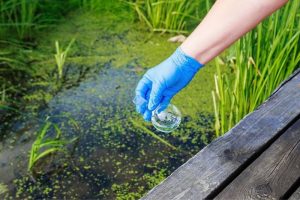 https://cannabisexaminers.com/wp-content/uploads/2021/01/Heres-how-to-organize-watering-process-for-growing-cannabis.jpg
https://cannabisexaminers.com/wp-content/uploads/2021/01/Heres-how-to-organize-watering-process-for-growing-cannabis.jpg
“Hi, Billy, how often do you water your cannabis plant?”
“Every time I feel like drinking water, I pour some in the pot too. After all, plants are living things.”
Billy is a smart guy. He has invented a simple solution to a knotty problem: How to organize the watering process when growing cannabis? But he has sentenced his plant to die in doing so.
9 out of 10 times, overwatering leads a marijuana plant to catch fungus or to die altogether. Whereas underwatering also dries up the leaves of a plant if not kill it.
I didn’t mean to frighten you, but you need to understand the significance of water. It works as a fuel for the plant. The amount and quality of water you pour today will determine the amount and quality of buds you’re going to harvest tomorrow. Therefore, it is super essential to organize the watering process for growing cannabis.
This article is the one-stop guide, and “Here we go.”
Quality of water – Three-dimensional criterion

Cannabis grows and responds to a certain quality of water. Needless to say, the water safe for consumption might not be suitable for the plant as well. There are three components we’re going to discuss in this section:
-
Nutrients
Cannabis needs nutrients for rapid growth. Dilute them in the water when you’re growing with soil and coir mixes. Increase the quantity as the plant grows in size. Generally, the fertilizer recommends a specific dosage. But it is wise to use a third-fourth of it.
-
pH
It defines the acidity and alkalinity of water. pH ranges from 0 to 14. Cannabis consumes nutrients within a small range. It varies from one medium to another, but 5.8 to 6.4 pH of water is all-around suitable. Always check and adjust it whenever needed.
-
PPM –
PPM (parts per million) measures the dissolved contaminants in water. Municipality often treats water with chemicals like chlorine and calcium. Stream water is full of biological contamination. As you add more nutrients and pH up or down, ppm will increase.
It is a three-dimensional criterion to improve the quality of water. First, add up nutrients. Secondly, measure and adjust the pH levels; otherwise, cannabis won’t uptake those nutrients. Lastly, water should be clean of any physical, chemical, or biological contaminants. After adding nutrients, your water may have 700-800 ppm. As long as the runoff has a lower ppm than the source, your plant is taking nutrients.
These measurements help you to figure out the health and needs of a plant. You need only two devices: a pH meter for pH levels and a TDS meter for ppm.
Sources of water – Pick the best!

The first choice you encounter while organizing the watering process is to decide the source.
There are several options. Each has its pros and cons. The most efficient water sourcing is the most expensive. And the cheapest is the most grueling. So, deciding which source is best for watering cannabis depends upon the following things:
- Your budget
- Quality of untreated water
- The environmental conditions
- Size of cultivation
- Labor and effort
I have narrowed down the best options based on the above list. This article presents the five most empirical water sources for growing cannabis.
-
Bottled Water –
It is the best choice for home growers. Bottled water is clean and easily accessible. Furthermore, it doesn’t require a high cost for the initial setup. However, it is an impractical option for large-scale cultivation because they will have to employ many workers.
-
Tap Water –
Most growers use tap water. It is inexpensive and used for all sizes of cultivation. A water tank with a hose reel will suffice. But tap water has more than 7.0 pH and contaminants that negatively affect the osmosis process. That’s why you have to do a lot of work to fulfill the three-dimensional criterion.
-
Drip System –
The drip system is an excellent option in terms of management and risks. It keeps providing a small amount of water, and you don’t have to do that. More advanced drip systems incorporate smart timers. Growers can differentiate the amount and timing of water supply for individual plants. High-tech drip systems are quite expensive.
-
RO System –
A Reverse Osmosis system rules out all contaminants and impurities. It has a thin membrane with small pores to purify water with a single push. It reduces 90% to 99% chances for cannabis to have nutrition lockout or root diseases. Large-scale growers frequently install the RO system. It only demands one-time expenditure, but that’s enough to put a strain on the pocket.
-
Hydroponics –
It is a cutting-edge technology that refers to growing plants without soil. The plants get nutrient-rich solutions and water. Hydroponic systems create a conducive environment for the healthy nourishment of cannabis. The water only needs changing once a week or two. Hydroponic cannabis grows two times faster than soil cannabis. Remember, it is not an option for small-scale growers.
How often should I water cannabis?

Here comes the question of the day. It is the quantum mechanics of botany, to be honest. You can’t get the right answer unless you consider all variables. I’m going to discuss the most important variables:
-
Size of the container –
The bigger the pot, the more water a weed plant needs. Sow seedling into a small pot and later move it into a bigger one. Also, the pot must have a drainage hole at the bottom.
-
Medium –
Growing medium largely determines the amount of water. The drainage ability and water retention of soil are important in this regard. The soil must not retain moisture for too long as it would invite fungus and pets.
-
Temperature –
Outside temperature also has a say in watering needs. Moist and humid weather delays the water cycle. In dry and sunny conditions, you may have to water twice or more a day.
-
Health –
Cannabis requires water according to its overall health. If the plant is already weak and not absorbing water, pouring more water is similar to strangle a sick man.
-
Stage of maturity –
The phase of growth is the most vital variable. Seedlings need more amount of water. In the vegetative and flowering stage, cannabis needs water 2-4 times per week. Again, other variables affect this frequency. Reserve the last two weeks for pure water only and flush all nutrients before harvesting.
Aside from these factors, use traditional techniques as well. Touch the upper soil. If it’s dry, your plant needs water. Overwatering is a common mistake, and you should avoid it at any cost. Drooping leaves are a prime symptom of overwatering.
Organizing the watering process is not difficult but crucial for the growth of cannabis. People who have decorated gardens with their bare hands know that plants talk. Try to know them. Spend more time with them. More importantly, make notes of your watering schedule and learn from your mistakes.

